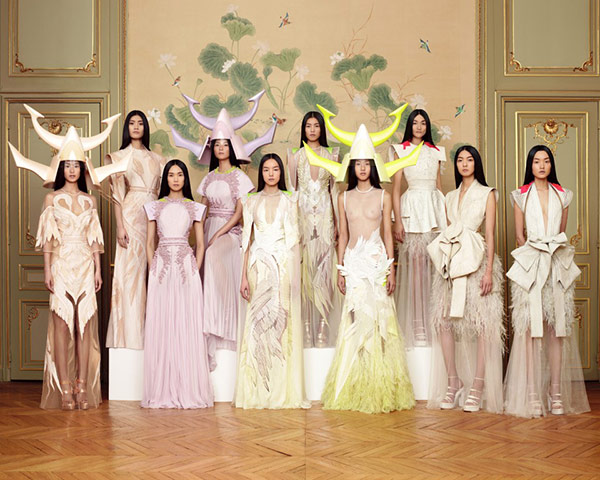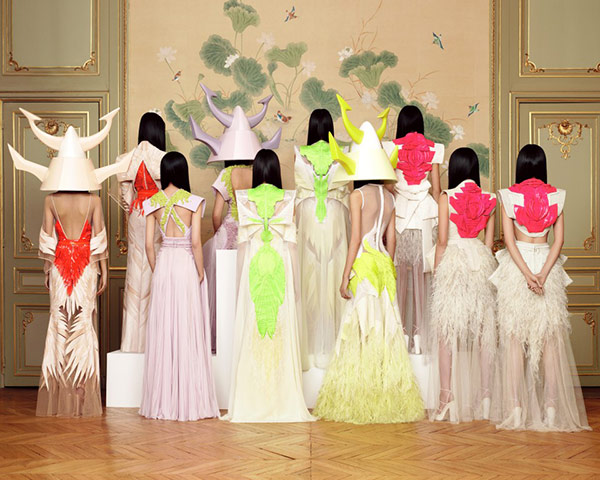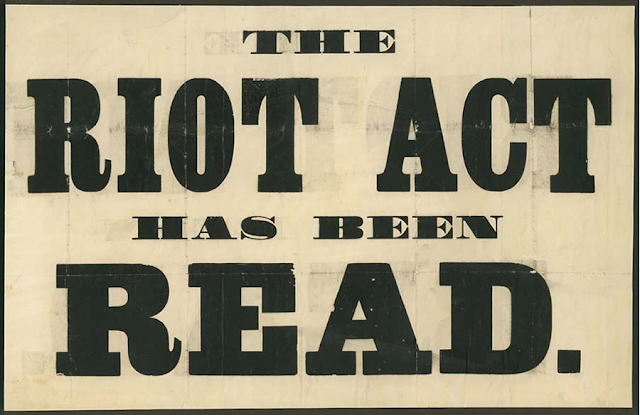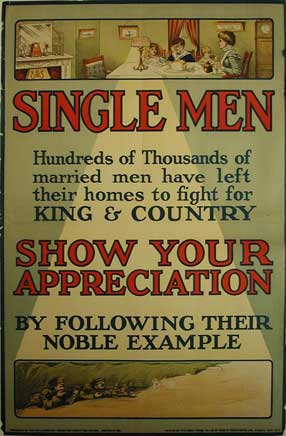Givenchy's Spring 2011 Couture collection caught my eye. It consists of ten outfits, designed by Italian Riccardo Tisci, inspired by popular Japanese culture. A Japanese dance style called Butoh is supposedly one of the inspirations for the garments, although I had a look at some (terrifying) YouTube videos of Butoh, and I can't quite see the connection... Anyway, the romance and palette of 'dried flowers' mixed with the huge hats modelled on Japanese robot toys (made by Philip Treacy) is an enchanting mix. I also love the great difference between the front of the garments and the heavily appliquéd and more colourful backs. The effort that has been put into the garments is considerable - one outfit required 2,000 hours of cutting and 4,000 hours of sewing!
Sunday, January 30, 2011
Friday, January 14, 2011
Digital trinkets.
I am in the midst of exams so should really have my nose in a book rather than be sat here finding digital trinkets that please me... sometimes these things happen! Here are a few little things that I have wondered across that have made me smile over the past few days, starting with two tiny illustrations by Edward Lear.
The idea of the above "altered books poetry" really fascinates me. When (and if) I have time, I shall do it and post it to a random address on the other side of the world. Now I've written this, I have to do so. The process is meant to work like this:
"Cut the bindings off of books found at a used book shop. Find poems in the pages by the process of obliteration. Put pages in the post and send them all around the world. Repeat."
Wednesday, January 12, 2011
Lyrical seduction.
'Zebra' by Beach House is my song of the moment. It is just so chilled and serene, providing a great backdrop to so many activities. It is like an adult's lullaby, or musical massage.
Any way you run, you run before us
Black and white horse arching among us
White Winter Hymnal.
I was very lucky to receive a wonderful digital camera for Christmas, and I am enjoying experimenting with photography and composition. Here are a few of the photos I have taken that sum up my Christmas break...
Red sky at night over snow-covered suburbia
"There's no place like home"
I was given these Chinese dragon shoes when I was little, and have kept them on my mantlepiece ever since.
These is nothing better than curling up with the cat - this is Phoebe!
Cozy days reading on the sofa...
Friday, January 7, 2011
Art. Fashion. Identity.
The current exhibition at the Royal Academy of Arts, entitled "Aware: Art Fashion Identity" is a thought-provoking journey through the use of clothing as a mechanism of communication and displaying identity. The exhibition is comprised of four main areas: Storytelling, Building, Belonging and Confronting, and Performance.
Despite weak pieces in all four of the areas, each one adds an interesting dynamic to the use of clothing for expression. Storytelling explores the role of clothing in the representation of personal and cultural history. Building considers clothing from a more practical viewpoint, as a form of protection or shelter that can reflect the nomadic, portable nature of modern life. I found this section to be the weakest of them all, collating the pieces by often tenuous links to their 'category'. Belonging and Confronting added an interesting political dimension to the clothing, examining cultural and social traditions and tensions. Performance neatly ties the exhibition together to remind us that we all 'perform' through the clothing that we choose to wear, even if it does not resemble the fantastical pieces just seen.
The Nomadic Mosque, created by Azra Aksamija
Faintly ridiculous, but amusing nonetheless, the Nomadic Mosque is an outfit that contains a portable prayer mat, complete with compass to ensure that the wearer faces quiblah. It is wearable architecture, and can rapidly transform a secular space into a place of worship. Although I am sure that it will remain conceptual, the idea provides an interesting voice for the place of religion within society.
Cindy Sherman - Doll Clothes, 1975 - A dynamic exploration of gender and identity.
Deceptively made of black nappa leather and 43kg of adamantine dressmakers pins.
The dressmakers pin, a traditional symbol of the female role in many societies, is used here to portray a type of armour. It embodies both female vulnerability and female strength, beauty and function, elegance and ugliness.
Marina Abramovich, Imponderabilia (1977)
Abramovic's concept: "In a selected space. Naked we stand opposite each other in the museum entrance. The public entering the museum has to turn sideways to move through the limited space between us. Everyone wanting to get past has to choose one of us." Very awkward, very amusing, very telling about human nature.
Gillian Wearing, 60 minute silence
60 Minute Silence, which won the 1997 Turner Prize, looks, on first glance, like a lifesize photograph of a collection of police officers. The realisation that the work is actually a video is pleasing, as you catch one of the police officers blinking or twitching. They attempt to remain still and quiet for the full hour, but the pressure to do so grows with time. Fidgeting and flexion appears to be contagious – sweeping through the line-up periodically. One officer, who commendably remains very still throughout, shrieks with joy when told that they have finished. The cathartic cry echoes through the whole gallery, eliciting many frightened expressions and a break in the silence of the gallery also. Brilliant.
Stills from Sharif Waked’s 7-minute video, Chic Point: Fashion For Israeli Checkpoints
Palestinian-born Sharif Waked’s video cleverly and shockingly juxtaposes the enforced searching of men at military checkpoints, with the willing exposure of flesh by models in a fashion show. Removing clothes and exposing skin are presented in two polar ways. The powerful and esteemed role of choice in the these acts is a stark message about society, freedom and liberty.
Seda intervened in the everyday life and social interactions of the people living in two distinct housing areas where she lived as a child. She noticed how people in Brno-Lisen and the more recently-built Nova-Lisen did not greet each other or acknowledge each other's existence. She did not feel comfortable with such social atomisation, so embarked on an attempt to revolutionise the social relations between the two groups.
Seda printed a shirt with the design of the 1970 Brno-Lisen housing project. She then matched each address in Brno-Lisen with an address from Nova Lisen, and posted a shirt from each Brno-Lisen household to their corresponding Nova Lisen household in an attempt to encourage interaction and a collective sense of belonging.
Yohji Yamamoto, wooden vest and skirt, AW 91-92
This vest and skirt made of hinged wooden slats demonstrates the architectural nature of fashion through the planar geometry and raw materials. The placard behind the piece commented: "Yamamoto has clearly articulated his position on the industry in which he works: he dislikes fashion and feels that his role is to regain respect for clothing and promote women’s independence."
Wednesday, January 5, 2011
Evolving English.
The British Library are currently showing an exhibition entitled 'Evolving English', which follows the evolution of our language from the first written examples in Old English, to the slang and globalisation of English nowadays. The exhibition explores a variety of influences on the language - historical, social and cultural - and includes rare artefacts such as the Nowell Codex manuscript which contains the only known copy of Beowulf. I really enjoyed the exhibition, although I found it frustrating trying to view the pieces among the hoardes of people crowded around the glass display cases! Nevertheless, here are a few of the pieces that I found most interesting...
Wycliffe was an early advocate for translation of the Bible into the common tongue. He completed his translation directly into vernacular English in the year 1382, and his work is now known as Wycliffe's Bible. The language that he translated the Bible into is believed to have had a profound impact on the English language of the time. And the manuscripts are very pretty!
Hooke's Micrographia (1665) details Hooke's observations through various microscope lenses. The book was the first major publication of the Royal Society, the first scientific best-seller, and notably coined the biological term "cell". I am sure that the meticulous drawings have since inspired people from all disciplines: artists, scientists...
More to come soon...
Wycliffe was an early advocate for translation of the Bible into the common tongue. He completed his translation directly into vernacular English in the year 1382, and his work is now known as Wycliffe's Bible. The language that he translated the Bible into is believed to have had a profound impact on the English language of the time. And the manuscripts are very pretty!
Jonathan Swift's 18th-century book Proposal for Correcting, Improving and Ascertaining the English Tongue is very amusing. Swift bemoans poets for the perceived misuse of the English language in the name of poetry. He writes,
"These Gentlemen, although they could not be insensible how much our language was already overstocked with Monosyllables; yet, to save Time and Pains, introduced that barbarous Custom of abbreviating Words, to fit them to the Measure of their Verses; and this they have frequently done, so very injudiciously, as to form such harsh unharmonious Sounds, that none but a Northern Ear could endure"
"They have joined the most obdurate Consonants without one intervening Vowel, only to shorten a Syllable … What does Your Lordship think of the Words, Drudg'd, Disturb'd, Rebuk't, Fledg'd, and a thousand others, every where to be met in Prose as well as Verse? Where, by leaving out a Vowel to save a Syllable, we form so jarring a Sound, and so difficult to utter, that I have often wondred how it could ever obtain."
I think I shall enlist the help of some friends who possess a 'Northern Ear' to see whether they can tolerate such poetry! The great North / South divide epitomised within a sentence!
The Riot Act, of 1715 to 1973, permitted the police to enforce the dispersal of any group of twelve or more people assumed to be unlawfully assembled. The full name of the the Act was "an act for preventing tumults and riotous assemblies, and for the more speedy and effectual punishing of the rioters". The phrase 'to read the riot act' now finds itself used within everyday language much less formally, to denote a reprimand against bad or rowdy behaviour. The Act was superseded in 1986 by the Public Order Act, which has much less of a ring to it, sadly.
The full proclamation was as follows:
"Our sovereign Lord the King chargeth and commandeth all persons, being assembled, immediately to disperse themselves, and peaceably to depart to their habitations, or to their lawful business, upon the pains contained in the act made in the first year of King George, for preventing tumults and riotous assemblies. God save the King."
There were also a couple of recruitment posters from WW1 and WW2 that displayed incredibly emotive and persuasive language and writing styles. I can't see any advertising this blatant having an effect on today's men, except perhaps for outrage. I wonder what these differences between men of the war eras and current-day gentlemen would reflect?
And some part of the advertising campaign must have been effective. According to the wonderful source of veracity that is Wikipedia (!) "The war began with a massive and unprecedented wave of enthusiasm. At the beginning of August 1914, Parliament issued a call for an extra 500,000 soldiers. The response was overwhelming. By the end of September, over 750,000 men had enlisted."
Another interesting fact: "The Pals battalions of WW1 were specially constituted units of the British Army comprising men who had enlisted together in local recruiting drives, with the promise that they would be able to serve alongside their friends, neighbours and work colleagues ("pals"), rather than being arbitrarily allocated to regular Army regiments."
Hooke's Micrographia (1665) details Hooke's observations through various microscope lenses. The book was the first major publication of the Royal Society, the first scientific best-seller, and notably coined the biological term "cell". I am sure that the meticulous drawings have since inspired people from all disciplines: artists, scientists...
A personal favourite exhibit was a Rupert Bear annual (pictured below). I have been collecting Rupert annuals since I was little, and always loved the three methods of storytelling on each page: a picture, a rhyming couplet and the full text.
Subscribe to:
Posts (Atom)

































